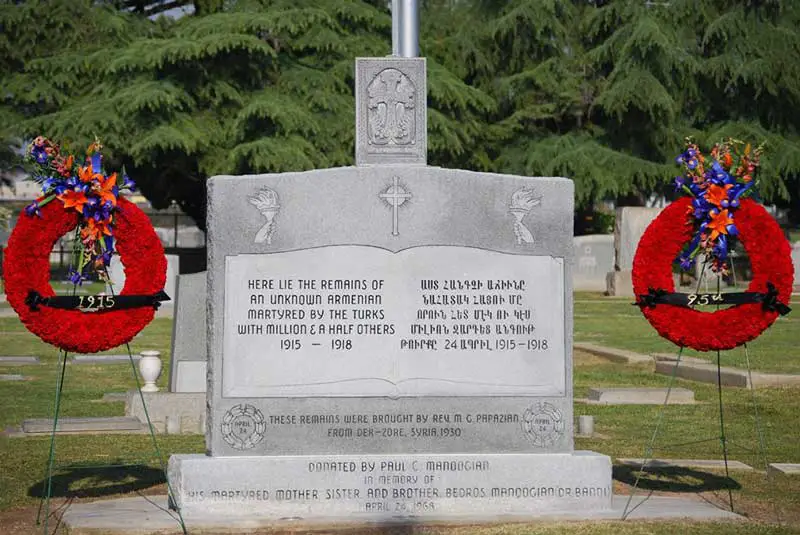The First Armenian to have ever set foot in America was John Martin in 1618. He came from Persia and brought silkworms and Tobacco with him. He settled in Virginia. In the 17th-18th centuries, small groups of Armenians immigrated to America from Europe (Poland, Hungary, Holland), and India.
They resettled in the states of Virginia, South Carolina, and Georgia. In the 1770s, the number of Armenians in the United States reached 70. The Ottoman Empire persecuted Christian minorities, which was another factor that caused some Armenians from Cilicia and Western Armenia to migrate to the US in the 1830s.
The first Armenian who came to Fresno in 1879 was Jacob M. Seropian. He is buried at the Masis and Ararat Armenian Cemetery,
Armenians started leaving their motherland when they lost their kingdom and became under foreign rule. Armenians have been forcibly moved from their residing places to further improve the state of trade and commerce in underdeveloped cities. That is how we find Armenians in India, America, and Europe…
Armenians are known to establish communities with educational, religious, and political institutions all over the world. In the USA, Americans of Armenian origin form a large number of more than 2 million.
Significant Armenian Personalities who participated in the Civil War In the USA
three Armenian doctors—Simeon Minasian, Garabed Galstian, and Baronig Matevosian.
military hospitals in Philadelphia
Armenian American History
•The first Armenians settled in North America in the early 1600s.
• By the end of the 1700s, there were around 70 Armenians living in the United States.
• The 1830s saw a new wave of Armenian immigrants due to American missionary activity in Armenia and other parts of Turkey.
• Many Armenians came to the United States for work and education during the 1800s.
• By 1900, there were over 160 American missionaries working in Turkey and almost 3000 Armenian students attending 40 different boarding schools and colleges.

Remains of Martyrs and Memorials of Survivors
Remains were brought to Fresno Ararat Cemetery, by Rev. M.C. Papazian from Der Zore, Syria in 1930. Donated by Paul C. Manoogian in memory of his martyred mother, sister, and brother, (Bedros Manoogian) on April 24, 1968.
The Armenian cemetery in Fresno, California: The Ararat Massis Armenian Cemetery, was established in 1885. Also known as Ararat Cemetery, it features a memorial dedicated to the victims of the Armenian Genocide, which includes bones from unknown victims brought over from Der Zor, Syria.
It also contains many Khatchkars, monuments, and benches dedicated to heroes who helped the Armenian survivors such as Mary Jacobson m Mama Jacobson, and the children of the Birds Nest Orphanage in Jbeil Lebanon.“
A tribute toward those heroes who survived and what they went through to rebuild the Armenian nation in Fresno “says Vanoush as she promises to shed more light on important people who have passed in the community.
Famous Monuments at the Ararat Massis Cemetery in Fresno
The cemetery is the burial place of many famous Armenian American heroes: recipient of the Navy Cross during World War II, Victor Maghakian (1915–1977), dramatist and author William Saroyan (1908–1941), and Soghomon Tehlirian (1896–1960), The Armenian Genocide survivor who brought justice and assassinated the former Ottoman Interior Minister Talaat Pasha.
Also buried in Fresno Ararat Cemetery was Zoravar Antranik, Andranik Ozanian (1865–1927), military commander and statesman, afterward, he was re-buried in Pere Lachaise, Paris in 1928 and finally in Yerablur, Armenia in 2000.
“Something my father used to tell us when he was a child, that when Soghomon Tehlirian used to come to Armenian picnics all the older Armenian ladies would rush around him and smother him and kiss his trigger finger. “
